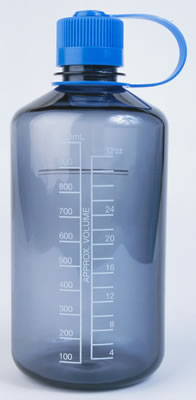|
The Oliver Foundation is a non-profit organization dedicated to the prevention of childhood obesity.
|
|

Are you interested in becoming a Teen Board Member?
Click here for more information.
|
Coming Soon! Check out our new website with new features and updated information. Become a member of the Oliver Kid's Team. Oliver Study Manual with lessons for the classroom Recipes Healthy School Activities and Strategies And so much more!
|
Scheduled
Presentations
April 9, 2011
Texas Dietetic Association Houston, TX
April 11, 2011
Experimental Biology Washington, DC
May 12, 2011
CIA - Healthy Flavors, Healthy Kids
San Antonio, TX
|

Funding Opportunities
|
Walmart Stores and Sam's Club Giving Program
The Walmart Foundation supports programs and initiatives addressing education, health and wellness. For health and wellness in particular, the Foundation looks to improve access to healthcare, promote healthy lifestyles behaviors and reduce disparities. Organizations that meet the eligibility requirements for these programs can request an application a their local Walmart store or Sam's Club.
Grant Amount:
$1,000 - $5,000
Deadline: Rolling
For more information, click here.
|
|
|
|
|
|
What are you drinking?
 American adults and children ages 2 to 18 drink approximately 400 calories per day in beverages. The major types of beverages consumed by adults, in descending order by average daily calorie intake are: American adults and children ages 2 to 18 drink approximately 400 calories per day in beverages. The major types of beverages consumed by adults, in descending order by average daily calorie intake are:
- regular soda
- energy and sports drinks
- alcoholic beverages
- milk (including whole, 2%, 1% and fat free)
- 100% fruit juice
- fruit drinks
The top three beverages - regular soda, energy and sports drinks and alcoholic beverages - provide empty calories with little or no nutritional value. While low-fat and non-fat milk and 100% fruit juice do provide calories they also contain substantial amounts of nutrients.
Water has zero calories and is needed to perform many functions in your body. To keep calories low and to maintain a healthy weight choose water and recommended amounts of fat-free milk and 100% fruit juice.
|
|
|
Water
Water plays a key role in almost every major body function: - controls body temperature.
- carries nutrients and oxygen to cells.
- removes wastes.
- cushions joints.
- protect organs and tissues.
How much water should you drink daily? What happened to eight 8oz glasses a day?
In 2004 new recommendations from the Institute of Medicine (IOM) stated that healthy individuals with regular access to drinking water and beverages, could meet their needs by paying attention to thirst and drinking water with meals. This recommendation is for a healthy individual but not an athlete or anyone with any type of medical condition.
The eight (8oz.) glass rule is still a good rule of thumb if you need a number to aim for - but you can also count non-caffeine beverages and food with high liquid content. Remember, individual needs differ. Below you'll find some things to be aware of that can effect your hydration. Reasons to drink more water: Prolonged physical activity, over one hour Warm weather Illness - vomiting, diarrhea or high fever Unable to detect thirst, infants or the elderly |
|
Milk and 100% Fruit Juice
Size does matter, portion size that is. Most Americans do not get the recommended amount of dairy products or fruits and vegetables.
Children 2 - 8 yrs: 2 cups Over 8yrs and adults: 3 cups
Serve fat-free milk at meals. If you drink whole milk, gradually make the change from 2% to 1% and finally fat-free. Add fat-free milk to oatmeal or hot cereals.
Your first choice to meet the 5 to 9 servings of fruits and vegetables should be whole foods, not fruit juice. If that is not option, drink 100% fruit juice.
- Read the label, if it says "juice cocktail" or simply "fruit juice" it's not 100% fruit juice.
- Be aware of your portions and glass size.
- One cup (8 ounces) of 100% orange juice equal 110 calories and two fruit servings.
- Juice glasses have increased in size over the years, if you don't know how much "your" glass holds - measure it!
|
|
Lesson: Water, Water Everywhere!
Grades: 2nd - 5th
Objective: Students will find out the importance of water in life by figuring out the water content in fruits and vegetables.
Materials: Fruits and vegetables Food Scale Paper towels Paper plates
Description: Teachers will talk about the importance of water in all kinds of life, reminding students that we are made up of mostly water which is why we need to stay hydrated. An easy way to see how much water is in nature is by looking at fruits and vegetables; they are also filled with water. - Weigh slices of apples, bananas, potatoes and celery and have students record the weight on a chart.
- Leave the food slices out on paper plates, cover with a paper towel and reweigh them daily for 3-5 days.
Once measurements are complete, ask students which food lost the most and least weight. Speculate on the reasons why. |
|
Have you created a Healthy School Environment in your district? Send us an e-mail and tell us all about it - info@oliverfoundation.org .
You may be spotlighted in the next Oliver Foundation newsletter - T.E.A.M. Talk.

|
|
Sincerely,
Oliver Foundation |
|
|